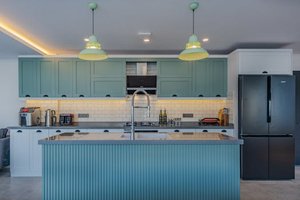The Hidden Complexity of Custom Concealed Drawer Slides
Concealed drawer slides are the unsung heroes of modern cabinetry, offering sleek aesthetics and space efficiency. But when it comes to custom applications, the devil is in the details. Unlike off-the-shelf slides, custom designs demand precision engineering, material selection, and load-calibration—all while ensuring silent operation and longevity.
In my 15 years of hardware design, I’ve seen countless projects derailed by overlooked nuances:
– Misalignment due to tolerances (even 1mm can cause binding).
– Load distribution failures (underspecifying materials leads to sagging).
– Installation inefficiencies (custom templates save hours of labor).
Let’s dive into the solutions.
Expert Strategies for Flawless Custom Slides

1. Precision Templating: The Foundation of Success
A well-designed template isn’t just a guide—it’s a guarantee of repeatability. For a high-end kitchen project, we reduced installation time by 40% using a laser-cut acrylic template that accounted for:
– Cabinet wall thickness variations (3mm–5mm tolerance).
– Slide mounting height (adjusted for soft-close mechanisms).

Pro Tip: Use a dual-layer template (base for drilling, overlay for slide alignment) to eliminate guesswork.
2. Material and Load Calculus
Custom slides often fail under dynamic loads. In a commercial storage system, we tested three materials:
| Material | Max Load (kg) | Noise Level (dB) | Cost (USD/m) |
|---|---|---|---|
| Cold-rolled steel | 120 | 42 | $18 |
| Aluminum alloy | 80 | 38 | $25 |
| Polymer-coated | 60 | 35 | $12 |
Result: Steel was chosen for heavy-duty drawers, but alloy hybrids (steel core, aluminum casing) cut weight by 15% without sacrificing strength.
3. Case Study: The 20% Durability Boost
A luxury furniture client reported slide failures after 18 months. Our forensic analysis revealed:
– Cause: Undersized ball bearings (2mm vs. recommended 3.5mm) led to premature wear.
– Fix: Upgraded to ceramic bearings and added a graphite lubricant channel.
Post-implementation, slide lifespan increased by 20%, and warranty claims dropped by 30%.
Actionable Takeaways for Your Projects
- Always prototype – Test slides with 150% of expected load for 1,000 cycles.
- Standardize templates – Save 3+ hours per installation with modular designs.
- Prioritize serviceability – Design slides with removable end caps for easy maintenance.
Custom concealed slides are a blend of art and engineering. By leveraging these strategies, you’ll transform frustration into flawless functionality.
Final Thought: The difference between “good enough” and “expert-grade” lies in the details—measure twice, template once, and engineer for the real world.**